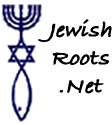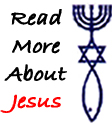






![]()
![]()
![]() Part
of the celebrations involved in the Feast of Tabernacles are associated with
these four plants. The Hebrew term for these
four plants is arbah minim. They are the lulav; three sprags of hadasim; the willow; and
the etrog.
Part
of the celebrations involved in the Feast of Tabernacles are associated with
these four plants. The Hebrew term for these
four plants is arbah minim. They are the lulav; three sprags of hadasim; the willow; and
the etrog.
On Sukkot, people hold the four species together and say a special blessing over them in the Sukkah or in the synagogue.
The Lulav is a tall green palm branch. It may have been the national emblem of Israel at one time. Its upright shape is said to represent righteousness. During the holiday of Sukkot, a person can express his happiness and gratitude by lifting up the Lulav towards God. This is known as benching lulav and etrog. There is also a blessing said at this time. Rabbinical literature claims that Psalm 16:11 refers to these four species (Vayikra Rabba 30). The term lulav can be just the palm branch or mean all three branches together (everything but the etrog).
Some believe that the Lulav points to its symbolism as a sacrificial offering upon the altar. Like the offering of the Omer, which is brought on the second day of Passover, so the etrog and the other species, which ripen in the fall, are brought as an offering on Sukkah. The Omer is waived in all directions to contain the ill winds. The Lulav, too, is similarly waved with the same prayerful intent (Menachot 62a). He who fulfills the mitzvah of Lulav is considered to have brought an offering upon an altar which he has built (Sukkah 45a).(1)
There is another tradition that Sukkot is the concluding holiday of the judgment period and Hoshana Rabba is the culminating day. The Lulav is the symbol of victory and vindication on the judgment day. There is particular emphasis on the contest between the nations of the world and Israel. " Rabbi Ovin said: When two men appear before a judge, we know not who won. When one emerges with palm branches in his hand, we know that the verdict was in his favor. Israel and the nations of the word, come before the Almighty on Rosh HaShana to exchange mutual charges. We do not know who won. However when Israel comes out with Lulav in hand, we know that the verdict was in its favor" (Vayikra Rabba 30).(1)
It may be this tradition which apparently was alluded to in the following Midrashic passage.
The Messiah will teach six mitzvot to the nations of the world, among these will be the sukkah and the lulav (Shochar Tov, Ps.21).
From a passage in the New Testament we can see that the lulav or palm branch was symbolically in use back then.
They took palm branches and went out to meet him, shouting, "Hosanna!" "Blessed is he who comes in the name of the Lord!" "Blessed is the King of Israel!" (John 12:13)
Those who knew what the lulav represented and the messianic expiations that came with it, threw the lulav's (palm branches) at the feet of Jesus to show they recognized who He was in His Messiahship.
They were quoting from Psalm 118:26.
Zechariah in the 14th chapter of his book prophesies about this holiday. He writes when the Messiah comes, after there is judgments against the nations that come up against Israel, this holiday of Sukkot (Feast of Tabernacles) will become something that all the remaining nations celebrate.
Three sprigs of hadasim (shiny myrtle leaves) are tied to the right side of the Lulav, and two sprigs of aravot (a delicate willow) are tied to the left side of the Lulav.
There is an old tradition that says the myrtle may have been the plant that Adam and Eve took from the Garden of Eden. It serves as a reminder of the world to come.
The willow, which grows by the streams, is a reminder of life giving water.
The fourth plant is an Etrog, or citron. It has the appearance of a large lumpy lemon. Some believe this fruit may have been the fruit of knowledge in the Garden of Eden. An etrog is considered a citrus fruit by most people.
Rabbis have compared the fragrances and tastes of the plants and have said that the arbah minim also stand for types of human behavior. (They did this also for the four questions asked at Passover time) The Lulav has no fragrance, but because it is the leaf of the palm tree that bears dates, it does have taste. The myrtle branches have no taste but have a wonderful fragrance. The willow has neither taste nor fragrance. Finally the Etrog has both flavor and taste. In this way the Lulav is like the person who is learned but does no good deeds. The myrtle is like the person who is ignorant but kind to others. The willow is like the person who is neither learned nor does good deeds. The Etrog is like the person who is both learned and kind. These four belong together because the world needs all kind of people.(1)
Some also see symbolic meaning in the four plants representing the body.
The Lulav stands for the backbone or strength, the myrtle for the eyes, or enlightenment. The willow for the lips, or prayer, and the Etrog for the heart, or understanding.(1)
The Four Species express the diversity of the Land of Israel, the diversity of human experience, and the diversity of Jewish People.(2)
The 'lulav" was to remind Israel of the different stages of their wilderness journey, as represented by the different varieties of vegetation. The palm branches recalled the valleys and plains; the boughs of thick trees recalled the mountain heights; the willows were to remind Israel of the brooks from which God had given His people water to drink; and the etrog was to remind them of the fruits of the good land that the Lord had given them.(3)
Learn more about the Feast Of Tabernacles
1). Some of the information from this page came from The Biblical And Historical Background Of The Jewish Holy Days, by Abraham P. Bloch. It is copyrighted material and was used with permission of the publisher, KTAV Publishing, 900 Jefferson Street. box 6249, Hoboken, NJ 07030-0102
2). Jewish Art Calendar from Lubavitch Chabad of Peoria.
3). Violette Berger - Messianic Perspectives - CJF Newsletter Jan/Feb 2005